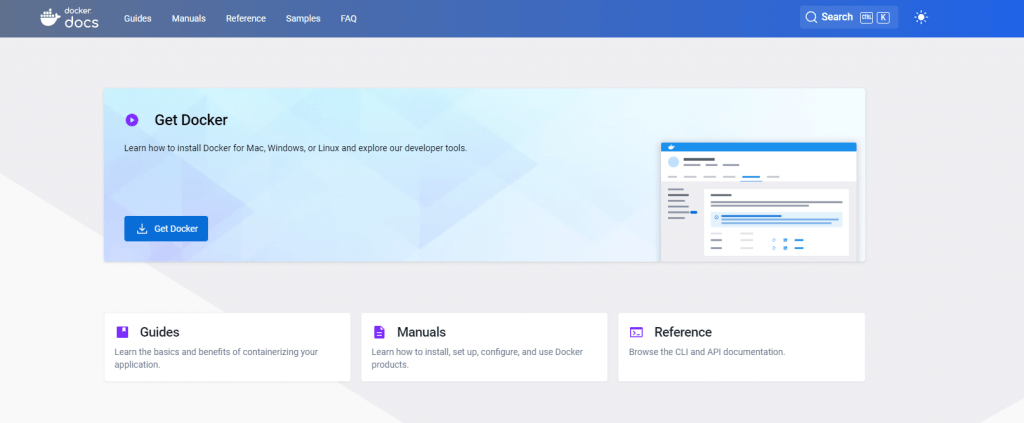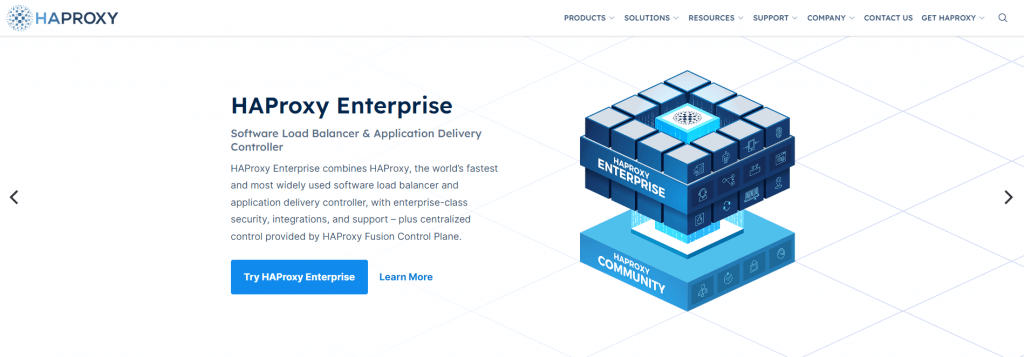Today, efficiently managing traffic and ensuring high availability is crucial. This is where HAProxy and Docker come into play, to offer a powerful combination for scalable and robust deployments.
HAProxy is a well-known load balancer, that excels in distributing web traffic across multiple servers, enhancing performance and ensuring reliability.
Docker is a platform for containerization, that can simplify the deployment and management of applications, making it an ideal companion for HAProxy. Furthermore, Docker’s versatility makes it a preferred choice for modern hosting solutions, such as seedboxes, which offer enhanced flexibility and efficiency in managing diverse applications.
Table of Contents
- Why do You Need HAProxy in Docker Environments
- How to Set up HAProxy with Docker
- How to Deploy and Manage HAProxy in Docker
- Advanced Configuration
- Best Practices for HAProxy and Docker Integration
- How to Implement High Availability with HAProxy in Docker
- How to Increase Security and Performance in HAProxy Docker Deployments
- How to Monitor and Log in HAProxy Docker Environments
- Final Words
1. Why do You Need HAProxy in Docker Environments
As applications grow, they often face challenges when handling the increased traffic. A single server may struggle to cope, leading to slower response times or even downtime.
HAProxy addresses this by intelligently distributing traffic across multiple servers, ensuring no single server becomes a bottleneck. This load balancing helps with handling traffic spikes. Furthermore, it also provides uninterrupted service even when some servers are down for maintenance or unexpectedly fail.
2. How to Set up HAProxy with Docker
a. Installing Docker
The first thing you need is to install Docker on your server. Docker is available in the default repositories of most Linux distributions.

For CentOS, use:
sudo yum install docker
For Ubuntu:
sudo apt-get install docker.io.
After the installation, make sure the Docker service is started and enabled to run on boot with commands like
sudo systemctl start docker
and
sudo systemctl enable docker.
b. Pull the HAProxy Docker image
With Docker running, the next step is to pull the HAProxy Docker image. You can do this by using:
sudo docker pull haproxy.
This command fetches the latest HAProxy image from Docker Hub, which includes the HAProxy software and its dependencies, ready for deployment.
c. Configure HAProxy
Before running HAProxy, you’ll need a configuration file. It is typically named haproxy.cfg, and defines the rules for load balancing.
This file dictates how HAProxy behaves, including how it handles incoming requests and distributes them to the backend servers. The configuration file is divided into several sections, each serving a specific purpose:
- Global: Defines global settings for HAProxy, such as logging, user privileges, and performance tuning parameters.
- Defaults: Sets default parameters that apply to all other sections unless overridden.
- Frontend: Specifies the front-end interfaces, where clients connect. It includes settings like the port number, IP address, and the type of protocol to use.
- Backend: Contains the server details where the requests are sent. This section includes server IP addresses, ports, and specific load-balancing algorithms.
The configuration file also specifies the load balancing algorithm, such as round-robin or least connections.
3. How to Deploy and Manage HAProxy in Docker
a. Run HAProxy in a Docker Container
To run HAProxy, use the docker run command with appropriate flags to set the container name, mount the configuration directory, and map the necessary ports. For example:
sudo docker run -d --name my-haproxy -v /etc/haproxy:/usr/local/etc/haproxy:ro -p 80:80 haproxy.
This command starts HAProxy in a Docker container, making it ready to balance incoming web traffic.
b. Test and Verify the HAProxy setup
After deployment, testing the setup is also important.
This involves sending requests to your HAProxy instance and ensuring they are correctly distributed to the backend servers.
You can use tools like curl to send requests and observe the responses to verify that load balancing functions properly.
Looking to set up HAProxy with Docker?
Streamline your deployment with RapidSeedbox’s reliable IP rental services. Enjoy seamless integration, improved performance, and exceptional support for your HAProxy and Docker setup.
4. Advanced Configuration
a. Load Balancing Strategies
HAProxy supports various load-balancing algorithms, each suitable for different scenarios.
The round-robin algorithm distributes requests evenly across servers, while the least connections algorithm directs traffic to the server with the fewest active connections.
Choosing the right algorithm depends on your specific requirements and server capabilities.
b. Optimizing HAProxy for Docker Environments
To take full advantage of HAProxy in Docker, it’s essential to optimize its configuration for your specific use case. This includes tuning parameters like timeouts, and connection limits, and choosing the right load-balancing algorithm based on your traffic patterns and server capabilities.
c. Handling High Traffic
In high-traffic scenarios, HAProxy’s ability to efficiently distribute traffic and handle concurrent connections becomes crucial.
Implement features like rate limiting and queueing to help manage traffic spikes and prevent server overload.
d. HAProxy for SSL/TLS Termination
HAProxy can also be configured for SSL/TLS termination, offloading the SSL/TLS processing from the backend servers.
This setup improves performance as it frees up resources on the backend servers to process the actual application requests.
5. Best Practices for HAProxy and Docker Integration
a. Regular Updates and Security Practices
Keep both HAProxy and Docker updated to improve security and performance.
Regularly updating to the latest versions ensures you have the latest features and security patches.
b. Monitoring and Logging
Effective monitoring and logging are key to maintaining a healthy HAProxy setup. Use HAProxy’s built-in statistics and logging features, along with Docker’s monitoring tools.
That way you’ll be able to monitor the performance and address troubleshooting issues on time.
c. Scalability and Flexibility
The combination of HAProxy and Docker excels in scalability.
Docker Compose, in particular, makes it easy to scale up or down your HAProxy instances based on demand, ensuring your infrastructure adapts to your needs.
d. Advanced Load Balancing Techniques
HAProxy offers a variety of load-balancing algorithms, each suited for different scenarios.
Beyond the basic round-robin and least connections, there are more sophisticated algorithms like:
- Source: Bases the decision on the client’s IP address. This is useful for session persistence.
- URI: Distributes requests based on the request’s Uniform Resource Identifier, ideal for caching systems.
- Least Time: Sends requests to the server with the lowest average response time and least active connections.
e. Health Checks and Server Management
HAProxy can perform health checks on backend servers to ensure traffic is only sent to operational servers.
These health checks can be simple TCP checks or more complex HTTP checks that verify the content of the response.
6. How to Implement High Availability with HAProxy in Docker
a. Set Up a High Availability Cluster
High availability (HA) is crucial for critical applications.
HAProxy can be configured in a cluster setup, where multiple instances of HAProxy are run in different Docker containers or hosts.
These instances can be set up in an active-passive or active-active configuration, which ensures continuous availability even if one instance fails.
b. Synchronize Sessions in Cluster Mode
In a clustered environment, especially with stateful applications, session synchronization is crucial.
You can configure HAProxy to share session state information across different instances. This ensures that users don’t lose their session data during failovers.
c. Use Docker Swarm for Automated Scaling
Docker Swarm is a clustering and scheduling tool for Docker containers.
When used with HAProxy, it allows for dynamic scaling of services based on load. HAProxy, running within a Docker Swarm cluster, can automatically adjust to the changing number of service instances, which provides seamless scalability.
7. How to Increase Security and Performance in HAProxy Docker Deployments
a. Security Best Practices in HAProxy
Security is one of the main concerns in web deployments. HAProxy provides several features to enhance it:
- SSL/TLS termination: HAProxy can terminate SSL/TLS connections, offloading this task from the backend servers. This not only secures the data transmission but also improves performance.
- Access Control Lists (ACLs): ACLs in HAProxy can be used for fine-grained control over traffic. That way, you can block, redirect, or modify requests based on various criteria.
- Rate limiting and abuse prevention: You can use rate limiting in HAProxy to prevent abuse and mitigate potential DDoS attacks.
b. Performance Tuning in HAProxy
To optimize the performance of HAProxy in Docker environments, consider the following:
- Connection and Buffer Tuning: Adjusting connection limits and buffer sizes in HAProxy can significantly impact performance, especially under high load.
- HTTP/2 Support: Enabling HTTP/2 in HAProxy enhances performance for modern web applications by reducing latency and allowing multiplexing.
- Compression: HAProxy supports response compression, which can reduce the amount of data transferred over the network, improving load times for end-users.
8. How to Monitor and Log in HAProxy Docker Environments
a. Why Monitoring is Important
Effective monitoring is crucial for maintaining the health and performance of HAProxy. Use monitoring tools to gain insight into traffic patterns and trends, server health, and potential bottlenecks.
b. How to Implement Logging in HAProxy
HAProxy’s built-in logging capabilities are robust.
Configure HAProxy to log detailed information about traffic and errors. This can help you with troubleshooting and understanding user behavior.
c. Integration with Monitoring Tools
Integrate HAProxy with external monitoring tools like Prometheus or Grafana to get a comprehensive view of the system’s health and performance.
These tools can visualize traffic patterns, response times, and server health in real-time.
9. Final Words
The integration of HAProxy with Docker offers a great solution for managing web traffic and ensuring high availability.
No matter if you’re running a small application or a large-scale enterprise system, this combination provides the tools you need for efficient, scalable, and secure deployments.
Just remember to follow the best practices and continuously optimize your setup. That way you’ll be sure that your infrastructure is not only capable of handling current demands but is also ready for future growth.
To summarize, HAProxy and Docker form a versatile and powerful duo, capable of improving your web services in terms of performance and reliability.
Looking to set up HAProxy with Docker?
Streamline your deployment with RapidSeedbox’s reliable IP rental services. Enjoy seamless integration, improved performance, and exceptional support for your HAProxy and Docker setup.


I have HAProxy on Docker nad I have a problem with forwarding real client IP address because DOcker network is isolated by default. The result is my application behind HAProxy receives Docker interface IP address instead of real client address.
Is network mode “host” in Docker any solution for that problem? How do you forward client adress if you have HAProxy in Docker container?
Hi Kris. Yes, network mode “host” is a possible solution. You will need to modify your Docker run command and use the ‘–network host’ option. Next, update your HAProxy config to forward the client IP address using the ‘forwardfor’ option. Hope this helps!